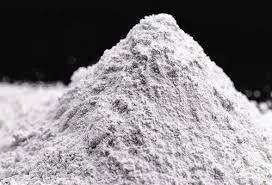
Oct . 06, 2024 11:59 Back to list
hydroxypropyl methyl cellulose hpmc
Understanding Hydroxypropyl Methylcellulose (HPMC) Applications and Benefits
Hydroxypropyl Methylcellulose (HPMC) is a cellulose derivative that plays a significant role in various industrial and pharmaceutical applications due to its unique properties. This semi-synthetic polymer is derived from natural cellulose and has been modified to improve its solubility and stability in aqueous solutions. Its multifaceted capabilities make it a popular choice among manufacturers in a range of industries, including pharmaceuticals, food, construction, and cosmetics.
Chemical Structure and Properties
HPMC is formed by the substitution of hydroxypropyl and methyl groups onto the cellulose backbone. The degree of substitution and the molecular weight of HPMC can vary, leading to differences in its viscosity and solubility. Generally, HPMC is a white, odorless powder that can dissolve in cold water to form a clear, viscous solution. This property makes it particularly valuable in formulations where clarity and texture are crucial.
One of the remarkable properties of HPMC is its ability to act as a thickening agent, emulsifier, and film-forming agent. In addition, it is non-ionic, which means it does not react with other ions in solution, making it stable across a wide range of pH levels. These attributes contribute to its extensive use across diverse applications.
Pharmaceutical Applications
In the pharmaceutical industry, HPMC serves multiple purposes. It is commonly used as a binder in tablet formulations, ensuring the uniformity and integrity of the tablet structure. Its film-forming capabilities also allow for the creation of enteric-coated pills, which resist dissolution in the stomach but dissolve in the intestines, enhancing the bioavailability of certain medications.
HPMC is also utilized in the development of sustained-release formulations. By controlling the release rate of the active ingredients, HPMC improves the efficacy of medications, thereby optimizing patient treatment regimens. Additionally, it can be used in ophthalmic preparations, such as artificial tears, due to its lubricating properties.
hydroxypropyl methyl cellulose hpmc

Food Industry Applications
The food industry leverages HPMC for its thickening and gelling abilities. It is commonly used in various food products, including sauces, dressings, and bakery items. HPMC improves texture and stability, while also facilitating smooth consistencies without altering the flavor of the food. Furthermore, it functions as a dietary fiber, contributing to the health aspects of products aimed at health-conscious consumers.
Construction and Cosmetic Applications
In construction, HPMC serves as a key ingredient in tile adhesives, plaster, and other building materials. Its water-retention capabilities allow for improved adhesion and workability, ensuring durable and efficient construction applications.
In cosmetics, HPMC is prized for its ability to thicken and stabilize formulations. It is often included in creams, lotions, and gels, providing a desirable consistency and improving the feel on the skin. Its non-toxic nature makes it safe for use in skin care products, further enhancing its appeal.
Conclusion
Hydroxypropyl Methylcellulose is an essential compound with a wide array of applications across different sectors. Its unique chemical properties, including its ability to thicken, bind, and stabilize products, make it invaluable in pharmaceuticals, food, construction, and cosmetics. As industries continue to innovate, the importance of HPMC is expected to grow, driving further research and development to unlock its potential in new applications. Whether enhancing drug formulations, improving food texture, or contributing to construction materials, HPMC showcases the remarkable versatility and functionality of cellulose-based derivatives.
-
Versatile Hpmc Uses in Different Industries
NewsJun.19,2025
-
Redispersible Powder's Role in Enhancing Durability of Construction Products
NewsJun.19,2025
-
Hydroxyethyl Cellulose Applications Driving Green Industrial Processes
NewsJun.19,2025
-
Exploring Different Redispersible Polymer Powder
NewsJun.19,2025
-
Choosing the Right Mortar Bonding Agent
NewsJun.19,2025
-
Applications and Significance of China Hpmc in Modern Industries
NewsJun.19,2025







